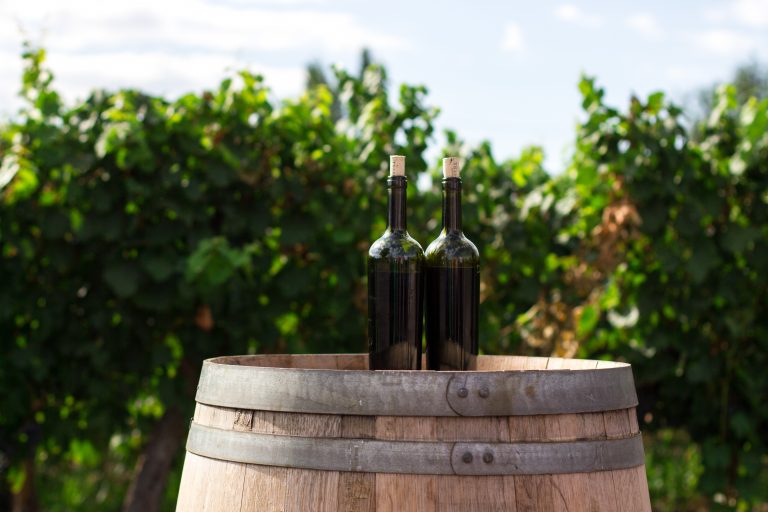Tasting the Best Northern Italian Wine Varieties
Interested in uncovering the rich heritage of wine in Northern Italy? Everybody knows Pinot Grigio but there is more to discover for sure in Piedmont’s Barolos, Veneto’s Proseccos, and the crisp whites of the Alps. This article introduces some grapes and wines that define the region—from Amarone to Vermentino—without diluting details that make each bottle unique. Join us as we explore some notable varieties and the sensory experiences they offer, in search of the spirit of Northern Italian wines.
Table of Contents
Key Takeaways
Piedmont’s rich wine diversity features prestigious reds like Barolo and Barbera and acclaimed whites and sparklings, including Muscat-based Moscato d’Asti, with each expressing the region’s unique terroir and winemaking heritage.
Veneto’s love for wine spans from the robust Amarone della Valpolicella, made from partially dried grapes, to the world-famous bubbly Prosecco, which is best enjoyed fresh and embodies the cultural quintessence of its local tradition.
Trentino-Alto Adige melds cultural influences in its viticulture, producing a range of Alpine white wines like Pinot Grigio and unique red wines such as Teroldego and Lagrein, each wine a reflection of the region’s distinctive climate and terrain.
Exploring Piedmont’s Wine Landscape

Nestled in the Alps along the Tanaro River, Piedmont, or Piemonte, boasts diverse wines like Barolo, Barbera, and Moscato d’Asti. Its hills are renowned for producing world-class wines.
Nebbiolo: Red Wine Class
In the heart of Piedmont lies a red that commands global attention – Nebbiolo, the grape behind the world-renowned Barolo and Barbaresco wines. This prestigious varietal thrives in Piedmont’s unique microclimate, characterized by hilly terrain and the frequent presence of fog, known in Italian as ‘nebbia’. Each sip of a Nebbiolo wine is like a brush stroke on a canvas, expressing distinctive qualities and complexity that are celebrated on the global stage.
As they age well, start a collection and pair a bottle of Barolo or Barbaresco with a rich and savory dish like grilled ribeye steak with a mushroom and herb sauce for an unforgettable gastronomic experience.
Moscato d’Asti: A Candy Sparkle
From the sunny slopes of Piedmont comes Moscato d’Asti, a sweet and aromatic wine with a gentle fizz. This wine is made from Moscato Bianco grapes, renowned for their pronounced floral and fruit qualities that contribute to its sweet profile. The low alcohol content of around 5-6% makes Moscato d’Asti a light and refreshing option, perfect for those warm summer days.
Imagine sipping on a glass of Moscato d’Asti, its freshness reminiscent of peach and apricot, coupled with a delicate sweetness. Truly, Moscato d’Asti is a testament to the mastery of the winemakers in Piedmont, a perfect wine that is a testament to the richness of Northern Italian wines. Try pairing it with a fresh fruit salad topped with a tangy citrus dressing.
Veneto’s Venerable Vines

Head east in Northern Italy, and you’ll reach Veneto, home to both Amarone della Valpolicella and Prosecco. In Veneto, wine isn’t just a drink, it’s a way of life. In the local dialect, a glass of wine is lovingly referred to as “ombra” or shade, a nod to St. Mark’s Campanile sheltering Venetians from the sun in Piazza San Marco.
Prosecco: Beyond the Bubbles
Prosecco, the sparkling gem of Veneto, is so much more than just bubbles. This wine expresses vibrant, fresh, and highly aromatic notes, including:
apple
honeysuckle
peach
melon
pear
Complemented by delicate floral aromas and a crisp finish. The Glera grape, primarily cultivated in the Treviso province, is it lending it a unique character that sets it apart from other sparkling wines. The Charmat method of production ensures a light, bright sparkling wine best enjoyed shortly after production rather than aged over time. So it’s a perfect go-to sparkling wine whether you’re toasting to a special occasion or simply enjoying a summer evening. Try a bottle with dishes like fried chicken or shrimp tacos.
Amarone: A Labor of Love
Amarone della Valpolicella, the pride of Veneto, is no ordinary red wine. It undergoes a unique ‘appassimento’ process, where selected grapes are air-dried for several months before slow pressing and fermentation begins. This extended drying and aging process, often reaching 15-16 percent alcohol What does ABV Mean in Wine? ABV (Alcohol... More content, results in a rich and robust red wine with a unique flavor profile. Some key characteristics are:
What does ABV Mean in Wine? ABV (Alcohol... More content, results in a rich and robust red wine with a unique flavor profile. Some key characteristics are:
Rich and full-bodied
Intense flavors of dried fruits, dark chocolate, and spices
High alcohol content
Smooth and velvety texture
Long aging potential
Pair your Amarone with rich dishes like slow-cooked beef brisket or barbecue ribs, and indulge in a gastronomic experience like no other.
Trentino-Alto Adige: A Blend of Cultures and Wines

As we ascend into the heights of Northern Italy, we discover Trentino-Alto Adige, a region where cultures and wines blend harmoniously. This region boasts a rich wine heritage, historically serving as an important supplier to the Habsburg monarchy in Austria. White wines from Alto Adige are especially known for their crispness, purity, and vibrant acidity. The region’s unique microclimates and high-altitude vineyards ensure exceptional balance and expression of terroir, offering a variety of grapes that yield wines of remarkable quality, including:
Müller-Thurgau
Pinot Grigio
Pinot Noir
Lagrein
Here, the Pinot Nero, as they call it in Italian, is recognized for its ruby to grenadine red color, high tannin Tannins in Wine Tannins in wine are phen... More content, and intense flavor. They also do Riesling noted for being lively and elegant, with a light color and hints of peach, apricot, and green apple.
Tannins in Wine Tannins in wine are phen... More content, and intense flavor. They also do Riesling noted for being lively and elegant, with a light color and hints of peach, apricot, and green apple.
Alpine Whites: Crisp and Clean
Trentino-Alto Adige is not just about red wines. The Alpine whites from this region are fresh, fruity, and have a pleasant acidity, making them perfect for enjoying in any season. Take a sip of Pinot Grigio from the region and you’ll notice its high acidity and neutral flavor profile, a distinct characteristic that sets it apart from its counterparts in other regions. There is also Nosiola, Trentino’s only native white. This unique grape gets its name from hazelnut, sometimes claimed to be the wine’s main fragrance. Some popular white wines commonly found in Trentino-Alto Adige include:
Pinot Grigio
Chardonnay
Gewürztraminer
Müller-Thurgau
Nosiola
These wines are known for their crispness, fruitiness, and versatility. Whether you’re enjoying a glass on its own or pairing it with food, these northern white wines of are sure to delight your taste buds.
Distinctive Reds: From Schiava to Lagrein
While Trentino-Alto Adige is known for its crisp Alpine whites, the region’s reds are equally worth savoring. From the light and fresh Schiava, known for its balance of red fruit flavors and subtle earthiness, to the distinctive inky color of Lagrein, each red wine from this Alto-Adige offers a unique tasting experience. And let’s not forget about Teroldego, Marzemino, and Enantio, some of the southern half’s autochthonous reds now seeing a bit of a renaissance, as much in a return to tradition as applying innovations and modern winemaking approaches.
Whether you prefer a light-bodied red or a full-bodied wine with high tannin Tannins in Wine Tannins in wine are phen... More content, Trentino-Alto Adige has a red wine to suit your tastes.
Tannins in Wine Tannins in wine are phen... More content, Trentino-Alto Adige has a red wine to suit your tastes.
Trentodoc: Italy’s Answer to Champagne
As we continue our journey through Northern Italian wines, we invariably find Trentodoc, Italy’s first classic method sparkling wine. This high-quality bubbly began in the early 20th century, inspired by the Champagnes of France. With 68 sparkling wine producers in the Trentino DOC, now trademarked as Trentodoc, Trentodoc is a testament to Italy’s commitment to producing world-class sparkling wines. Trentodoc wines are:
Fresh, fragrant, and light
With aromas of exotic fruit, Golden Delicious apples, apricots, and freshly baked bread
Mostly made from Chardonnay and Pinot Noir
These wines are a fantastic addition to any celebration and can easily elevate a romantic meal. Try one with oysters or a seafood risotto.
Friuli Venezia Giulia: Italy’s White Wine Haven

Friuli Venezia Giulia next to Slovenia is known for its exquisite white wines, characterized by flavors like pear, peach, and tropical fruits. With 10 DOC and 4 DOCG areas, the region offers a diverse range of wines. The refined Friulano grape variety is central to the wine scene, known for an aromatic essence that embodies the region’s storied winemaking heritage.
Friulano: A Signature Sip
Friulano, recognized as the signature grape of Friuli Venezia Giulia, tantalizes the palate with notes of apricot, Meyer lemon, and ripe gooseberry and is distinguished by its bitter-almond finish. This wine, sometimes mistaken for Sauvignon Blanc, exhibits a soft and silky texture balanced with medium acidity, contributing to its elegant structure. Careful yield management is an important part of producing Friulano, ensuring the distinctive flavors are vivid and well-defined.
Whether as a single varietal wine or in blends with Sauvignon Blanc, Chardonnay, Riesling, or the native Ribolla Gialla, Friulano adds complexity and nuance to every sip. Pair it with a grilled shrimp and avocado salad for a delightful gastronomic experience.
Emilia-Romagna: Not Just Iconic Dishes
Enveloped by the Apennine Mountains and the Po River, Emilia-Romagna offers a symphony of flavors that will delight any wine lover. From the sparkling and light Lambrusco to the mild-flavored Trebbiano Romagnolo, this region is a haven for those looking to explore Italy’s diverse wine offerings. The wines of the Romagna area, in particular, are recognized for their distinctive taste profile that includes a balance of fruitiness, good acidity, and minerality, as well as a dry, savory flavor known for its freshness and fragrances.
Lambrusco: Both Fizzy and Red
Lambrusco, one of Emilia-Romagna’s celebrated varieties, offers a contrasting experience with its refreshing nature. Known for its sparkling and light body with hints of violet and red fruits, Lambrusco is available in dry, off-dry, and semi-sweet styles, with dry being considered the best.
Whether you’re firing up the BBQ for a sizzling feast or indulging in a classic pizza topped with pepperoni and sausage, Lambrusco’s refreshing fizz adds a unique touch to your gatherings.
Sangiovese: Exploring Beyond Tuscany
Sangiovese, a grape variety most commonly associated with Tuscany, presents a lighter and fruitier profile when produced in Emilia-Romagna. Romagna Sangiovese DOC wines are characterized by a ruby red and violet hue with flavor notes of sour cherry, baked plum, and herbs. With the emergence of dedicated artisanal winemakers like Giovanna Madonia, who started her winery in 1992, Sangiovese wines from Emilia-Romagna are gaining recognition for their quality and unique characteristics.
So the next time you’re in the mood for Sangiovese, why not venture beyond Tuscany and give Emilia-Romagna’s version a try? It’s an easy pair with hearty Italian-American dishes like lasagna or spaghetti Bolognese.
Lombardy’s Liquid Gold
Moving north in Italy, we reach Lombardy, a region where the liquid gold of Franciacorta flows freely. This region, with its mineral-rich soil and commitment to ethical winemaking, has been a significant area for grape and wine production since Roman times. Whether you’re a fan of sparkling wines or prefer the robust reds of Valtellina, Lombardy offers an array of wines that cater to every palate.
Franciacorta: Another Great Champagne Alternative
Franciacorta, Lombardy’s sparkling wine, is crafted using a traditional production method akin to that of Champagne. This process, coupled with the use of Chardonnay, Pinot Nero, Pinot Bianco, and up to 10% Erbamat grape varieties, results in high-quality bubbles that can rival the world’s best. The Franciacorta wine region, with over 55% of its vineyards labeled organic, has pioneered sustainable practices in its viticulture.
With its vibrant flavors and refreshing bubbles, Franciacorta is an excellent alternative to Champagne, perfect for celebrating special occasions or simply enjoying a quiet evening with some French Fries, trust me.
Valtellina’s Mountain Gems
In the heart of Lombardy lies Valtellina, a region where wine is shaped by the dramatic, steeply terraced vineyards and alpine climate. The development of the region’s minerally fresh and aromatic wines is heavily influenced by its south-facing slopes along the Adda River coupled with its alpine climate. Wines from this region, such as Valtellina Superiore DOCG, the region’s premier label, are required to age a minimum of 24 months, including time in both wooden barrels and bottles.
Whether you’re a fan of robust reds or prefer a lighter-bodied wine, Valtellina offers a wine to suit your palate. Try one of these unique northern Italian Wines with eggplant parmesan or hearty meatballs in marinara sauce.
Liguria’s Coastal Vines

Finally, our journey through Northern Italy arrives at Liguria, a region across the Tanaro River from Piedmont where coastal vines produce diverse wines influenced by rugged and wild coastal mountains and proximity to the Mediterranean Sea. With viticultural practices dating back to Roman times, Liguria boasts a deeply rooted winemaking tradition that is especially evident in the terraced vineyards of Cinque Terre. Whether you’re a fan of Vermentino, a wine that thrives on mineral-rich, gravelly, red clay soils, or prefer the allure of Sciacchetrà, Liguria offers a wine for every palate.
Sciacchetrà: Local Favorite
Sciacchetrà is a dessert white crafted using time-honored traditional methods. The ‘passito’ process includes drying selected grapes into golden raisins before undergoing a slow fermentation that lasts at least two years. This delicate process results in a smooth and silky wine that combines flavors of honey, apricots, and figs, making Sciacchetrà a perfect sweet wine to enjoy with desserts or as a standalone meditative drink.
Vermentino: Essence of Sea Breeze
Vermentino, another of Liguria’s coastal gems, encapsulates the essence of the sea breeze in a glass. This white wine is known for its crisp texture and dynamic range of citrus nuances, coupled with a mineral-driven complexity. The coastal vineyards of Liguria impart a refreshing salinity and crispness to Vermentino, offering a pour that brims with the essence of the sea breeze.
So, if you’re looking for a wine that offers a taste of the Mediterranean, look no further than Liguria’s Vermentino. A perfect match with grilled fish or a fresh summer salad with citrus vinaigrette and feta.
Summary
We’ve journeyed through Northern Italy, from the foothills of Piedmont to the coastal vines of Liguria, savoring the rich tapestry of flavors and uncovering the diverse range of wines that this region has to offer. Whether you’re a fan of the robust reds of Piedmont, the crisp Alpine whites of Trentino-Alto Adige, the bubbly Prosecco of Veneto, or the allure of Liguria’s Sciacchetrà, Northern Italy has a wine to suit every palate. So why not embark on your own wine adventure, exploring the vineyards of Northern Italy, one sip at a time?
Frequently Asked Questions
What is the signature grape of Friuli Venezia Giulia?
The signature grape of Friuli Venezia Giulia is Friulano, known for its elegant and complex profile.
How is Amarone della Valpolicella produced?
Amarone della Valpolicella is produced by using partially dried grapes to concentrate sugars and flavors, creating a rich and full-bodied wine.
What makes Nebbiolo unique to Piedmont?
Nebbiolo’s unique characteristics in Piedmont are attributed to the region’s hilly terrain and foggy climate, which provide an ideal environment for the grape to thrive.
What is Trentodoc?
Trentodoc is Italy’s first classic method sparkling wine, providing a high-quality alternative to Champagne. Cheers!
What is special about Liguria’s wines?
Liguria’s wines are special because they are influenced by the region’s rugged coastal mountains and proximity to the Mediterranean Sea, resulting in a unique flavor profile.






